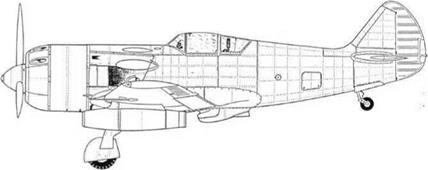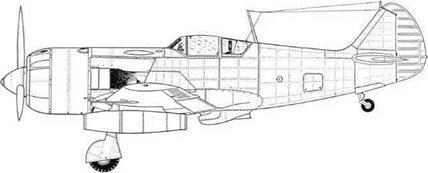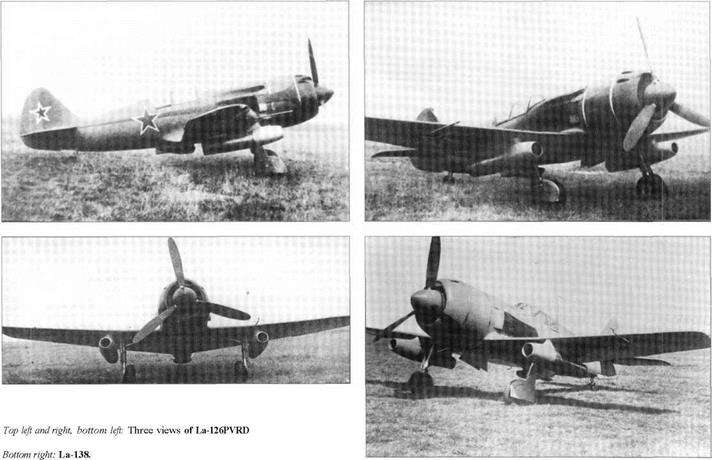Lavochkin ’164’ (La-126PVRD) and ’138’ (130PVRD-430)
Purpose: To test the use of ramjets to boost propulsion of a fighter.
Design Bureau: The OKB of S A Lavochkin.
By 1942 M M Bondaryuk had achieved reliable operation with the VRD-430. By this time this refined subsonic ramjet had flown over 200 times on test-bed aircraft. In early 1946 two were attached under the wings of’ 126′, a slightly modified La-7, to produce the La – 126PVRD, given the OKB number ‘164’. The assigned pilot was A V Davidov, and he tested this aircraft between June and September 1946.
The VRD-430 was a simple ramjet designed for subsonic operation. It was made mainly of steel, and had a diameter of400mm (1ft 3%in).
Able to burn almost any thin hydrocarbon fuel, including high-octane petrol (gasoline), it had a thrust in the region of 300kg (661 Ib), but performance data for this engine have not been found, neither have details of its fuel and control system. The La-126 was based on the La-7 but had a completely metal stressed – skin airframe, a new wing of so-called laminar profile, a modified canopy and many other changes, including the devastating armament of four NS-23 guns firing projectiles with more than twice the mass of the 20mm ShVAK. The La-138 was basically an La-9 fighter, in which the new wing and armament of the La-126 were matched with a completely redesigned fuselage. As before, a VRD-430 ramjet was hung under each wing,
to produce the ‘164’. The ‘138’ was the designation of the ‘130’ after it had been fitted with two VRD-430 ramjets. It emerged in this form at the end of 1946, and flight tested 20 times between March and August 1947. Very few details survive regarding this aircraft, possibly because in the turbojet era it did not appear to be important.
The VRD-430 demonstrated its ability to boost speed (see below) but at the expense of high fuel consumption and a serious increase in drag when the ramjets were not being used. It is not clear why the La – 126PVRD speed was ‘boosted by 64km/h’ by the ramjets, while the corresponding figure for the La-138 was almost twice as great.
LAVOCHKIN ‘164’ (La-126PVRD AND ‘138’ (130PVRD-430)
![]()


 |
9.8m 32 ft 1% in
8.64m 28 ft 41i in
17.59m2 189.3ft2
Weights
Empty 2,710kg 5,974lb
Loaded 3,275kg 7,22011)
Performance
Max speed at 2,340 m (7,678 ft) 694 km/h 431 mph Range with brief VRD usage 730 km 454 miles
Landing speed 145.6 km/h 90.5 mph
/run 688 m 2,257 ft
|
Dimensions (138) Span |
9.8m |
32 ft % in |
|
Length |
8.625 m |
28 ft 3n in |
|
Wing area |
17.59nf |
189.3ft2 |
|
Weights |
||
|
Empty |
3,104kg |
6,843 Ib |
|
Loaded |
3,730kg |
8,223 Ib |
|
Performance |
||
|
Max speed at 6,000 m (19,685 ft) 760 km/h |
472 mph |
|
|
which does not quite equate with the contemporary claim of |
||
|
‘boosted by 107-1 12 km/h’ Range with brief VRD usage |
1,100km |
683.5 miles |
|
Take-off run |
450m |
1,476ft |
|
Landing speed |
139 km/h |
86.4 mph |

|










